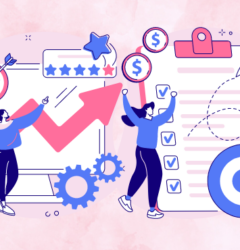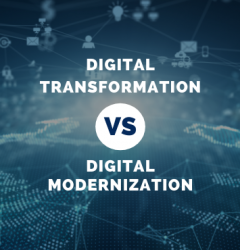
As a project manager, you miss out on a lot if you believe Agile is merely a buzzword. Truth be told, Agile methodology in project management can revolutionize how you and your business adapt, innovate, and thrive in the ever-changing market conditions.
As promising as it may sound, you need to learn the basics of Agile before you adopt it to get the best results.
This article will cover everything related to Agile, from the definition and principles of Agile methodologies to the principles of Agile software development. Let us begin:
What is Agile?
Agile is a groundbreaking project management approach prioritizing adaptability, collaboration, and continuous improvement. Unlike traditional methods, Agile embraces change, fostering flexibility. It emphasizes iterative development through sprints, involving cross-functional teams for feedback and adjustments.
Agile encourages continuous reflection and learning, refining processes with each iteration. It enables swift responses to customer feedback and market changes, delivering high-quality products faster. By embracing Agile, businesses thrive in an ever-evolving world, unlocking their full potential.
What are the 12 Agile principles?
The Agile methodology is guided by 12 core principles that serve as the foundation for effective project management and product development. Let’s explore each of these principles and their significance in creating successful Agile practices.
1. Customer satisfaction through early & continuous delivery
The primary focus of Agile is to deliver valuable and working software to customers as early as possible. By doing so, teams can gather feedback and make necessary adjustments throughout the development process, ensuring customer satisfaction and reducing the risk of wasted effort.
2. Welcome changing requirements
Agile embraces change as a natural and inevitable part of any project. Instead of resisting changes, Agile teams remain flexible, adapting their plans and priorities to accommodate new insights and evolving customer needs. This principle enables teams to stay responsive and deliver maximum value.
3. Deliver working software frequently
Agile advocates for delivering functional and usable software in short iterations, often referred to as “sprints” or “iterations.” Frequent deliveries ensure that progress is visible and stakeholders can see tangible results regularly.
4. Collaborate daily between business and developers
Close collaboration and communication between business stakeholders and development teams are crucial for project success. Regular interaction ensures that everyone remains aligned on project goals, reduces misunderstandings, and enables timely decision-making to address any challenges that may arise.
5. Build projects around motivated individuals
Agile recognizes the importance of motivated individuals in driving project success. By creating an environment that values and supports self-organizing teams, Agile empowers individuals to take ownership, make decisions, and contribute their expertise, ultimately fostering higher productivity and better outcomes.
6. Face-to-face communication
While virtual communication has its place, Agile values face-to-face interaction as the most effective means of conveying information. Direct communication minimizes misunderstandings, promotes quick feedback loops, and strengthens team collaboration, enabling faster decision-making and problem-solving.
7. Effective software as the primary measure of progress
Agile focuses on delivering tangible results. Working software serves as the ultimate measure of progress, clearly indicating the project’s advancement. This principle emphasizes the importance of tangible deliverables over excessive documentation or theoretical progress.
8. Sustainable development pace
Agile recognizes the significance of maintaining a sustainable pace throughout the project. By avoiding excessive workloads or prolonged overtime, teams can ensure higher productivity, reduce burnout, and sustain a consistent and healthy pace of development.
9. Continuous attention to technical excellence & good design
Agile teams prioritize technical excellence and emphasize the importance of good design practices. By focusing on code quality, maintainability, and scalability, teams can mitigate technical debt, enhance the product’s stability, and easily enable future iterations.
10. Simplicity
Agile promotes simplicity in both processes and solutions. By favoring simplicity over unnecessary complexity, teams can minimize waste, improve clarity, and deliver streamlined solutions that effectively address customer requirements.
Also Read: A Guide to No-Code Low-Code and Agile Optimization
11. Self-organizing teams
Agile encourages self-organizing teams that possess the autonomy to make decisions and determine how best to accomplish their goals. Empowered teams can optimize their own workflow, allocate tasks, and adapt their processes to maximize productivity and efficiency.
12. Regular reflection and adaptation
Agile promotes a culture of continuous improvement through regular reflection and adaptation. Teams regularly inspect their processes, gather feedback, and adapt accordingly. This iterative approach fosters learning, enhances team performance, and drives ongoing innovation.
Also Read: Agile Workflow 101: A Comprehensive Guide
Which are the top 5 Agile methodologies?
The Agile methodology encompasses various approaches, each with its own unique characteristics and benefits. Here are the top 5 Agile methodologies, along with their advantages and disadvantages:
1. Scrum
Scrum is a popular Agile methodology known for its iterative and incremental development approach. It employs time-boxed iterations called sprints, during which cross-functional teams collaborate to deliver working software.
Advantages of scrum:
- Embraces changing requirements for better adaptability.
- Enables quicker delivery of valuable product increments.
- Provides clear visibility into project status and challenges.
Disadvantages of scrum:
- This may lead to uncertain long-term project timelines.
- Success hinges on effective communication and cooperation.
- Pressure to meet sprint goals may lead to unrealistic targets.
2. Kanban
Kanban is an Agile methodology that visualizes work on a Kanban board, which displays tasks as cards moving through different stages of the workflow. It focuses on workflow optimization, limiting work in progress (WIP), and improving cycle time.
Advantages of kanban:
- Provides real-time visibility into work progress
- Allows easy incorporation of changes and promotes an adaptable workflow.
- Minimizes task switching and optimizes resource utilization.
Disadvantages of kanban:
- Leads to confusion and uneven distribution of responsibilities.
- Makes long-term planning and forecasting challenging.
- This may lead to excessive workloads and impact productivity.
3. Extreme Programming (XP)
Extreme Programming is an Agile methodology that emphasizes close collaboration between developers, testers, and customers throughout development. It strongly emphasizes code quality, automated testing, and continuous integration.
Advantages of XP:
- Leads to robust and reliable software.
- Ensures the product aligns with their needs and expectations.
- Fosters effective collaboration within the development team.
Disadvantages of XP:
- This may present challenges for teams new to XP methodology.
- It can be resource-intensive and affect overall productivity.
- Not suitable for complex projects due to its small-team-oriented nature.
Also Read: No-Code: A Quick & Agile solution for Business Leaders
4. Lean Development
Lean Development applies lean principles to Agile practices, focusing on delivering maximum customer value while eliminating waste. It emphasizes reducing unnecessary work, optimizing flow, and fostering a culture of continuous improvement.
Advantages of lean development:
- Reduces unnecessary costs and improves overall productivity.
- Fosters a culture of ongoing enhancements.
- Understands and addresses customers’ specific needs.
Disadvantages of lean development:
- Adopting can be challenging due to the absence of a defined framework.
- It may overlook broader aspects like innovation and long-term strategy.
- Makes employees insecure about their jobs due to unfamiliarity with new practices.
5. Crystal
Crystal is a family of Agile methodologies that provides lightweight and adaptable approaches based on project-specific characteristics. It emphasizes communication, teamwork, and frequent delivery. Crystal methodologies accommodate variations based on project size, criticality, and team expertise.
Advantages of crystal:
- Offers a range of methodologies suited to different project characteristics.
- Prioritizes effective teamwork, communication, and collaboration.
- Minimizes bureaucratic processes, leading to a more efficient development process.
Disadvantages of crystal:
- Choosing the right methodology for a certain project may require expertise.
- This leads to insufficient documentation, which can impact knowledge sharing.
- Finding experienced practitioners can be difficult because it is less well-known.
Now that Agile, its principles, and its common methodologies are clear, let’s learn about Agile software development.
What is Agile Software Development?
Agile software development is a collaborative & iterative approach that emphasizes adaptability and customer involvement. It involves breaking down projects into smaller increments, delivering working software quickly, and continuously refining and improving through frequent feedback.
Agile promotes close collaboration among cross-functional teams, embraces change as a natural part of the process, and prioritizes customer satisfaction. By fostering flexibility, transparency, and continuous improvement, Agile enables teams to respond effectively to evolving requirements, deliver high-quality software, and maximize value for customers.
What is the Agile Software Development cycle?
The Agile software development cycle, also known as the Agile lifecycle, is a repetitive and iterative process that enables the development of software in a flexible and adaptive manner.
1. Concept
The concept phase marks the initiation of the software development project. It involves identifying the need for the software, defining its purpose, and understanding the desired outcomes. This phase may include gathering requirements, conducting market research, and exploring potential solutions.
For example, a software development company may decide to create a mobile banking application to provide convenient & secure banking services to its customers.
2. Inception
During the inception phase, the project team collaborates to define the software’s scope, goals, and initial requirements. This phase establishes a high-level plan and identifies key features or functionalities to be included in the software.
In our example, the team may outline the core features of the mobile banking application, such as account balance inquiry, fund transfers, and transaction history.
Also Read: Traditional Vs Agile Project Management, Comparing and Contrasting
3. Iteration
The iteration phase is the heart of Agile software development. It involves the iterative and incremental development of the software through multiple cycles, commonly known as sprints or iterations. Each iteration typically lasts a few weeks and focuses on developing a set of prioritized features or user stories. The team continuously gathers feedback, adapts to changes, and refines the software based on user input.
In our example, the development team could work on the first iteration to implement the account balance inquiry feature, allowing users to check their account balances.
4. Release
The release phase occurs when a significant set of features or functionalities is completed and ready for deployment. It involves packaging the software and making it available for users. Depending on the project’s scope and priorities, releases can occur at the end of each iteration or after multiple iterations.
In our example, once the mobile banking application reaches a stable and usable state with the desired features, it can be released to a limited group of beta users for testing and feedback.
5. Production
The production phase involves deploying the software for widespread use by the target audience. It encompasses managing the software’s ongoing operation, monitoring its performance, and addressing any issues or bugs that arise. During this phase, user feedback and real-world usage data are valuable inputs for further enhancements and updates.
In our example, after successful beta testing, the mobile banking application can be launched on application stores and made available to all customers for seamless banking experiences.
6. Retirement
The retirement phase occurs when the software reaches the end of its life cycle. It involves decommissioning the software and discontinuing its support and maintenance. This phase may be triggered by technological advancements, changes in user needs, or the emergence of newer software solutions.
In our example, the mobile banking application may eventually be retired if the company decides to transition to a more advanced platform or if customer preferences shift towards alternative banking solutions.
Also Watch: Agile + Low-Code = Digital Rocket Fuel
No-Code Development: Enhancing Agile Methodologies
No-code development has emerged as a valuable tool in software development, particularly in complementing and enhancing agile methodologies. By allowing users to build applications without extensive coding, no-code platforms offer a range of benefits that directly address the challenges often encountered in agile development.
No-code development complements agile methodologies by:
- Enabling Rapid Prototyping: Quick creation of prototypes and MVPs without extensive coding allows for early feedback and faster adjustments.
- Enhancing Collaboration: Visual interfaces promote better communication between technical and non-technical team members, aligning efforts effectively.
- Reducing Development Time: No-code platforms speed up development, enabling agile teams to be more responsive to changing requirements.
- Fostering User-Centricity: Involving business users directly ensures applications meet end-users preferences, increasing customer satisfaction.
- Lowering Learning Curve: Non-technical team members can actively participate, breaking down barriers and encouraging inclusivity.
- Facilitating Faster Feedback Loops: Continuous feedback drives iterative improvements for higher-quality end products.
- Supporting Seamless Integration: Pre-built integrations and APIs enhance flexibility and adaptability in dynamic environments.
No-code development is a powerful enabler for agile teams, delivering high-quality products that meet evolving customer needs effectively.

What are Agile Software Development best practices?
Best practices in Agile software development include a set of guidelines and approaches that promote effective implementation of the Agile methodology. Here are some key best practices:
- Prioritize customer collaboration to ensure their needs are met.
- Embrace change as a natural part of the development process.
- Utilize iterative development to deliver working software incrementally.
- Form cross-functional teams to promote collaboration and shared responsibility.
- Encourage continuous feedback and improvement through regular reviews and retrospectives.
- Emphasize simplicity in design, architecture, and processes.
- Foster transparency and open communication within the team and with stakeholders.
- Adopt a business process management solution to streamline the workflows and make collaboration easier.
Also Read: SDLC Vs Agile: Which one is the best?
Conclusion
Agile methodology is revolutionizing the world of project management by prioritizing adaptability, collaboration, and customer satisfaction. Its iterative approach, emphasis on continuous improvement, and flexible mindset enable teams to navigate the complexities of today’s rapidly changing business landscape. By breaking down projects into manageable increments, embracing change, and promoting close collaboration, Agile empowers teams to deliver high-quality products faster & efficiently.
However, leveraging a business process management tool can further make the processes efficient as the tool helps in the early identification of bottlenecks in the process and improves transparency within the teams for productive collaboration.
Quixy can help you pick the best Agile methodology. Quixy’s no-code platform enables rapid application development. With Quixy, teams can quickly build, test, and adapt applications, ensuring fast, responsive delivery. This integration empowers businesses to meet evolving customer needs with ease. Schedule a demo today to see how Quixy can transform your development process!
Frequently Asked Questions(FAQs)
Q. What is Agile methodology?
Agile methodology is a modern and iterative approach to project management, primarily used in software development but applicable to various industries. It emphasizes flexibility, collaboration, and responsiveness to change, empowering teams to deliver high-quality products efficiently. Unlike traditional waterfall methods, Agile breaks the project into smaller, manageable increments called iterations or sprints. During each iteration, cross-functional teams collaborate closely, enabling continuous feedback and rapid adjustments. The Agile mindset values customer satisfaction and embraces a customer-centric development process, ensuring that the end product aligns with clients’ evolving needs and expectations.
Q. What are the core principles of Agile software development?
Agile software development is guided by a set of core principles that foster a dynamic and customer-focused approach. These principles prioritize customer collaboration, involving clients throughout the development cycle to gain insights into their requirements and preferences. Embracing change is another key principle, acknowledging that customer needs and project priorities may evolve over time, and being adaptable is crucial for success. Agile teams value working software over extensive documentation, emphasizing the importance of delivering tangible and functional results promptly. Facilitating self-organizing teams and promoting face-to-face communication is also central to Agile, as they encourage continuous collaboration and effective decision-making.
Q. What are the different Agile frameworks?
Agile offers a range of frameworks, each catering to specific project needs and team preferences. One popular framework is Scrum, which divides the project into fixed-length iterations (sprints) and employs specific roles like Scrum Master and Product Owner to facilitate smooth progress. On the other hand, Kanban focuses on visualizing the workflow and maintaining a steady flow of work items, making it suitable for ongoing and evolving projects. Extreme Programming (XP) concentrates on engineering practices, emphasizing continuous integration, test-driven development, and frequent releases to ensure high-quality software.
Q. How does Agile facilitate customer involvement?
Agile methodology places a strong emphasis on continuous customer involvement throughout the development process. Regular feedback sessions and live demonstrations of working software allow customers to witness tangible progress and provide valuable input. This ongoing collaboration ensures that the final product aligns with their vision and expectations. By maintaining customer engagement during every iteration, Agile allows for quick adjustments based on feedback, resulting in a product that often exceeds the customer’s initial expectations.
Q. What are the benefits and challenges of adopting Agile?
Adopting Agile offers numerous benefits to teams and organizations. Its iterative nature allows for faster product delivery, enabling businesses to respond quickly to evolving market demands. The constant feedback loop ensures that customer needs are met effectively, leading to higher satisfaction and retention. Agile promotes teamwork and collaboration, enhancing team morale and productivity. However, transitioning to Agile can be challenging. It requires a cultural shift, where stakeholders must embrace a more adaptive mindset and be open to change. Implementing Agile practices successfully necessitates training and support for team members to fully comprehend and utilize the Agile principles, frameworks, and tools. Addressing these challenges is vital to maximize the potential benefits of Agile implementation. But to overcome challenges no-code development aids Agile by rapid prototyping, collaboration, reduced development time, user-centricity, inclusivity, faster feedback loops, and seamless integration.
Subscribe
Login
Please login to comment
0 Comments
Oldest
















